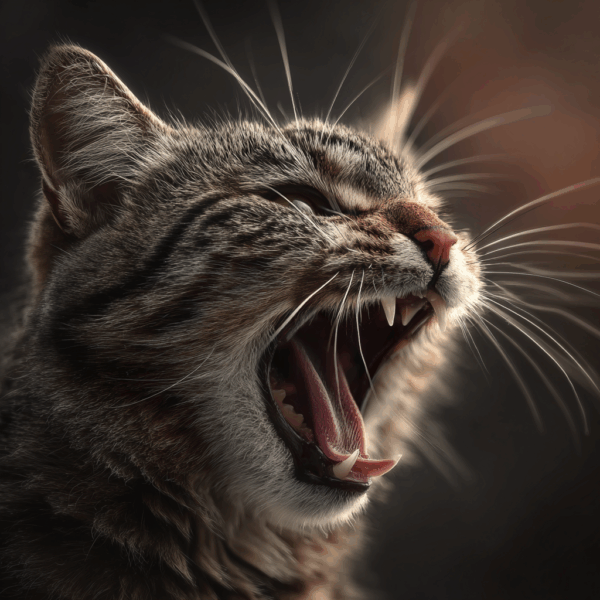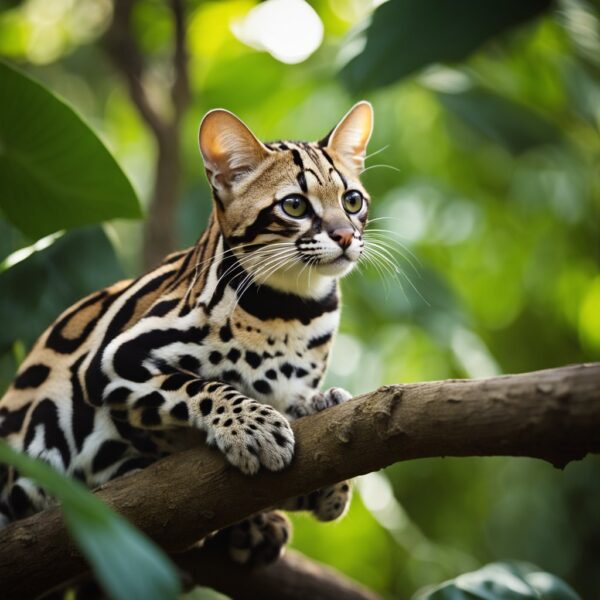
The Surprising Science of Snake Mimicry (and One Wild Cat That Takes It Even Further)
That Hiss Is More Than Just Drama
If you’ve ever heard your cat hiss, you know how startling—and honestly, a little dramatic—it can be. That sudden “psssst” sound, bared teeth, arched back, and wide eyes make it clear your cat is not in the mood.
But there’s more to the hiss than just a bad attitude.
Scientists believe cats may have evolved this sound to mimic one of nature’s most feared animals: the snake.
Let’s look into what research says about why cats hiss, how it could be an example of evolutionary mimicry, and how one wild cat species has taken this to a fascinating new level—by mimicking the sounds of monkeys.
What Is Mimicry in Nature?
Mimicry is when one species evolves to imitate the appearance or sound of another—usually to gain some survival advantage. For example:
- Harmless king snakes mimic the coloring of venomous coral snakes
- Some butterflies imitate toxic species to avoid predators
This type of defensive mimicry is called Batesian mimicry.
And now, many scientists believe **domestic cats may use a form of acoustic Batesian mimicry—by sounding like snakes when they hiss.
Why Do Cats Hiss
Cats hiss to communicate that they feel threatened, fearful, or overstimulated. It’s a warning signal meant to prevent conflict, not start one.
According to animal behaviorist Dr. John Bradshaw, author of Cat Sense:
“It’s possible that the feline hiss evolved as an example of acoustic mimicry. By mimicking a snake, a cat may be more successful at warding off threats without escalating to a fight.”
Think about it: most animals—humans included—have an innate fear of snakes. A cat that sounds like a snake may trigger that primal fear and gain the upper hand in a tense situation.
We’re Hardwired to Fear Snakes
There’s real science behind our fear of snakes. A 2013 study published in PNAS (Proceedings of the National Academy of Sciences) found that primates evolved to detect snakes quickly—possibly shaping the evolution of vision and attention in early humans.
So when your cat hisses, the sound taps into a deep, instinctual response that many animals can’t ignore. It’s a powerful bluff with real psychological weight.

The Margay: A Wild Cat That Mimics Monkeys
If you think mimicry is cool in domestic cats, wait until you hear what one wild cat can do.
Meet the Margay (Leopardus wiedii), a small spotted wild cat native to Central and South America.
In 2009, researchers observed a Margay in the Amazon mimicking the cries of baby tamarin monkeys—not to scare them away, but to lure adult monkeys into the open so it could ambush them.
“This is the first recorded instance of a Neotropical predator using vocal mimicry to deceive prey,” said the study’s authors, published in Neotropical Primates.
This is an example of aggressive mimicry, where predators imitate something harmless (or appealing) to trick their prey.
What Does This Mean for You and Your Cat
When your cat hisses, it’s not an act of aggression—it’s communication. A warning. A request for space. A signal of fear or discomfort.
Here’s how to respond:
- Don’t punish or yell. It’s not bad behavior—it’s survival instinct.
- Give them space to calm down.
- Identify and remove triggers if possible (loud noises, unfamiliar pets, etc.).
- Respect their boundaries.
Remember, your cat may be small and cute—but when they hiss, they’re channeling thousands of years of evolutionary wisdom (and maybe a snake or two).
Final Thoughts
The next time you hear your cat hiss, don’t take it personally.
Instead, appreciate it for what it is: a clever, ancient defense mechanism. Maybe even a whisper from their wild ancestors.
And if your cat starts sounding like a monkey?
You might just have a Margay on your hands!
Sources & Further Reading
- Bradshaw, J. (2013). Cat Sense: How the New Feline Science Can Make You a Better Friend to Your Pet.
- Hance, J. (2010) With ‘psychological cunning’ wild cat lures monkeys by mimicking their babies’ calls Mongabay
- Isbell, L.A. (2013). “The Fruit, the Tree, and the Serpent.”
- Calleia, F. O., Rohe, F., & Gordo, M. (2009). Hunting strategy of the margay (Leopardos wiedii) to attract the wild pied tamarin (Saguinus bicolor). Neotropical Primates, 16(1), 32-34. https://doi.org/10.1896/044.016.0107